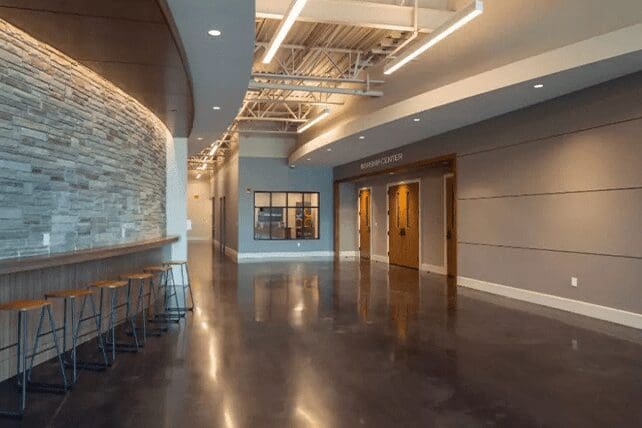The late 1990s and early 2000s brought many relocation projects and new builds for MG+A when megachurches were building large multi-phased campuses, Dobbins said.
During and after the Great Recession, the focus shifted to renovations on existing structures when churches were forced to do more with less.
“This was also a result of churches simplifying program needs, which decreased square foot requirements,” he said.
“The trend has been for churches to maximize their facilities by multi-using spaces and utilizing more off-campus resources such as small groups meeting in homes.”
First Baptist Church in Lafayette, La., partnered with MG+A in a remodel that came a few years before senior pastor James Pritchard arrived in April 2020. The church where he previously served as teaching pastor, First Baptist in Forney, Texas had undergone a remodel roughly during the same time as First Lafayette.
Pritchard recognized differences and similarities for each.
First Lafayette is in downtown and relatively landlocked while First Forney had 30 acres to work with. Forney also needed to address areas such as a large special needs ministry that requires more space and specific equipment.
Both had something in common, however.
“People want to be together,” Pritchard said. “Architecture follows ministry strategy, and you see that desire to gather and linger.”

First Lafayette basically has three large buildings that were connected in the remodel to form a central “main street.” The large atrium setting has a coffee bar, seating and couches for attendees.
“It’s become a gathering place for the entire church,” said Pritchard.
At First Forney, the classic architecture of the previous building funneled people to the sanctuary but did so just as quickly at the conclusion of service to the parking lot.
“The new building has a place to stay, and people would do that for an hour or so after church,” he said. “They hang around and visit because they can.”
Other congregations have different starting points.
Many church plants begin their existence in locations such as homes, a storefront or even a section of another church’s building. There comes a day, though, when many if not all look to get their own location.
That tends to happen, said Dobbins, when a church reaches a point where its financial resources can support such a move.
“There is certainly a burn-out factor that comes with using a temporary space every week and the challenges that come along with setup and takedown,” he said. “This places a significant importance on a young church plant’s ability to reach that critical mass in a timely manner.”

